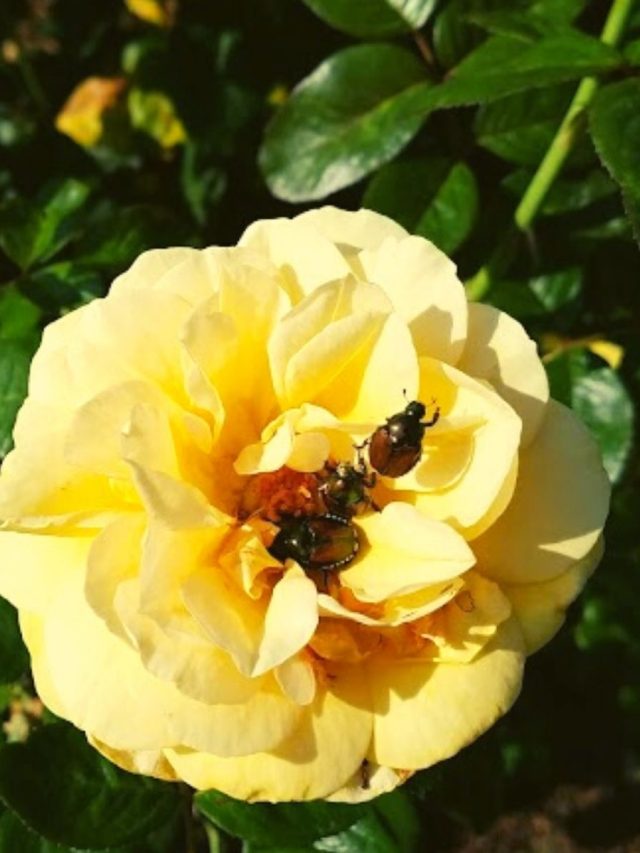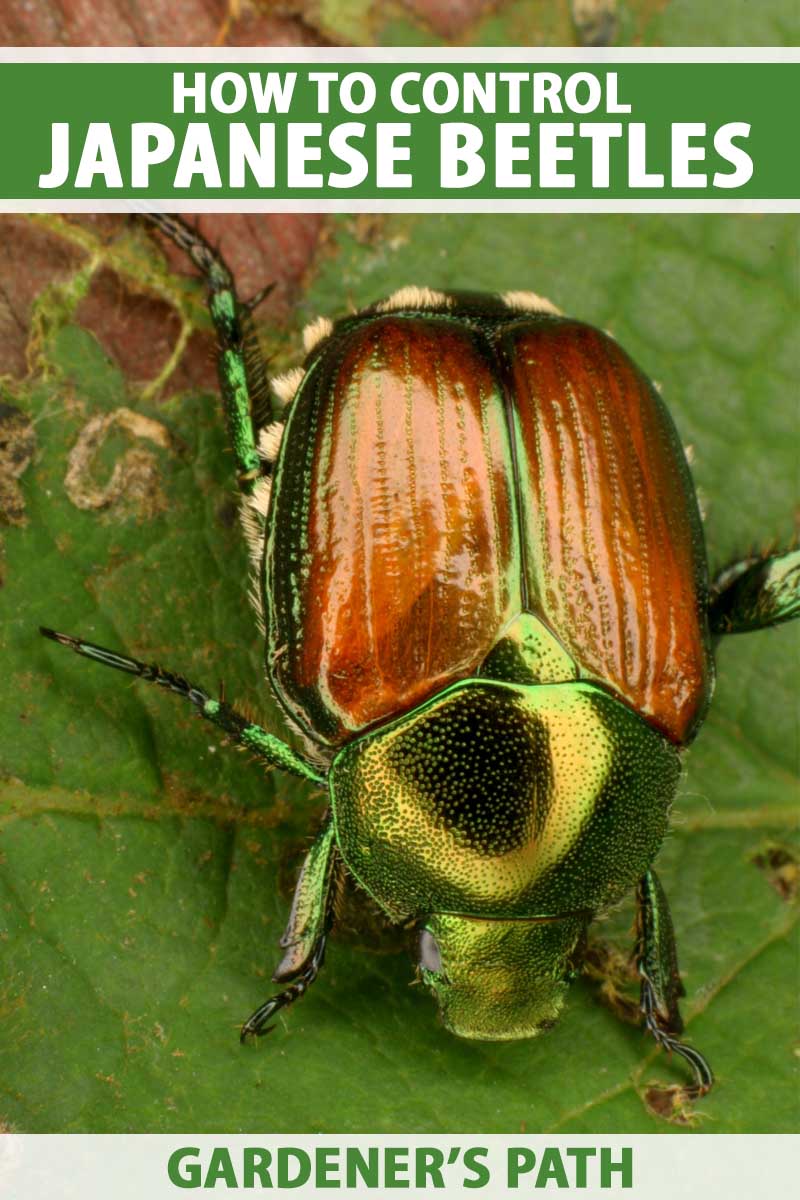Effective Solutions To Eliminate Japanese Beetles From Your Garden
Gardening enthusiasts around the world face a common adversary: Japanese beetles. These small yet destructive pests can wreak havoc on your plants and garden in no time. However, with the right strategies, you can protect your garden and maintain its beauty. In this article, we will explore effective solutions to eliminate Japanese beetles and provide you with actionable tips to safeguard your outdoor space.
Japanese beetles, scientifically known as Popillia japonica, are invasive pests that have been causing significant damage to gardens across North America and Europe. Their voracious appetite and rapid reproduction can make them a gardener's worst nightmare. Fortunately, there are proven methods to manage and control these pests effectively.
Whether you're a seasoned gardener or a beginner, this guide will equip you with the knowledge and tools necessary to combat Japanese beetles. From natural remedies to chemical solutions, we’ll cover everything you need to know to keep your garden thriving.
- Wwwtamilrockers Kannada Movies Download Your Ultimate Guide To Legal Streaming And Downloads
- Somali Wasmo Telegram A Comprehensive Guide To Understanding The Phenomenon
Table of Contents
- Understanding Japanese Beetles
- How to Identify Japanese Beetles
- The Life Cycle of Japanese Beetles
- Natural Solutions to Eliminate Japanese Beetles
- Chemical Solutions for Japanese Beetle Control
- Preventive Measures for Your Garden
- Tools and Equipment for Effective Control
- Common Mistakes to Avoid
- Environmental Impact of Beetle Control Methods
- Conclusion: Protect Your Garden
Understanding Japanese Beetles
Biography of Japanese Beetles
Japanese beetles are native to Japan but were accidentally introduced to the United States in the early 20th century. Since then, they have spread across North America and parts of Europe, becoming a major agricultural pest. These beetles feed on over 300 species of plants, making them a significant threat to gardens and crops.
Key characteristics of Japanese beetles include their metallic green bodies and copper-brown wings. Adult beetles are approximately half an inch long, and their larvae, known as grubs, are white and C-shaped. Understanding their biology is crucial for devising effective strategies to control their population.
Did you know? Japanese beetles were first discovered in the United States in 1916 in New Jersey. Since then, they have become one of the most destructive pests in the country.
- Hollywood Movie Download Your Ultimate Guide To Legal Streaming And Downloads
- Hd Movies 4u Hub Your Ultimate Destination For Highquality Movie Streaming
How to Identify Japanese Beetles
Signs of Infestation
Identifying Japanese beetles is the first step in eliminating them from your garden. Look for the following signs:
- Skeletonized leaves: Japanese beetles feed on the tissue between leaf veins, leaving behind a lacy appearance.
- Clusters of beetles: These pests often gather in groups on plants, making them easier to spot.
- Grubs in the soil: Check your lawn or garden soil for white, C-shaped larvae, which are the immature stage of Japanese beetles.
Early detection is crucial for effective control. Regularly inspect your plants and soil for signs of infestation, especially during the summer months when adult beetles are most active.
The Life Cycle of Japanese Beetles
The life cycle of Japanese beetles consists of four stages: egg, larva, pupa, and adult. Understanding their life cycle can help you target specific stages for control:
- Egg Stage: Female beetles lay eggs in the soil, usually in July.
- Larva Stage: Grubs hatch from the eggs and feed on grassroots, causing damage to lawns.
- Pupa Stage: Grubs transform into pupae in the spring.
- Adult Stage: Adult beetles emerge in early summer, feeding on plants and reproducing.
Targeting the larval stage can significantly reduce the population of adult beetles, providing long-term control.
Natural Solutions to Eliminate Japanese Beetles
Natural Remedies for Beetle Control
If you prefer eco-friendly methods, here are some natural solutions to eliminate Japanese beetles:
- Handpicking: Remove beetles manually and drop them into a bucket of soapy water.
- Neem Oil: Apply neem oil to plants as a natural repellent.
- Beneficial Nematodes: Introduce nematodes into the soil to target grubs.
Natural solutions are safe for the environment and can be highly effective when used consistently. Combining multiple methods often yields the best results.
Chemical Solutions for Japanese Beetle Control
Effective Chemical Treatments
For severe infestations, chemical solutions may be necessary. Here are some commonly used products:
- Insecticidal Soaps: Safe for most plants and effective against adult beetles.
- Systemic Insecticides: Treat grubs by applying granular insecticides to the soil.
- Pyrethrin Sprays: A natural-based chemical that kills beetles on contact.
Always follow the manufacturer's instructions when using chemical treatments, and consider the impact on beneficial insects and the environment.
Preventive Measures for Your Garden
Tips to Prevent Japanese Beetle Infestations
Prevention is key to keeping Japanese beetles at bay. Here are some proactive measures you can take:
- Plant resistant varieties of plants that are less attractive to beetles.
- Maintain healthy soil to reduce grub populations.
- Use row covers to protect vulnerable plants during peak beetle activity.
By implementing these preventive measures, you can reduce the likelihood of an infestation and protect your garden from damage.
Tools and Equipment for Effective Control
Essential Tools for Japanese Beetle Management
Having the right tools can make a significant difference in controlling Japanese beetles. Consider investing in the following:
- Garden Gloves: For safe and efficient handpicking.
- Spray Bottles: To apply natural or chemical solutions evenly.
- Traps: Use pheromone traps to lure and capture beetles.
While traps can be effective, they may also attract more beetles to your garden if not used properly. Use them strategically and in combination with other control methods.
Common Mistakes to Avoid
What Not to Do When Dealing with Japanese Beetles
Avoid these common mistakes to ensure successful beetle control:
- Over-reliance on traps, which can attract more beetles.
- Using broad-spectrum insecticides that harm beneficial insects.
- Ignoring the larval stage, which can lead to recurring infestations.
By steering clear of these pitfalls, you can maximize the effectiveness of your control efforts and protect your garden more efficiently.
Environmental Impact of Beetle Control Methods
Choosing Eco-Friendly Options
When selecting control methods, consider their environmental impact. Natural solutions and targeted chemical treatments are preferable to minimize harm to beneficial insects and the ecosystem. Always follow best practices and consult local guidelines for pesticide use.
Supporting biodiversity in your garden by planting native species and providing habitats for beneficial insects can also help maintain a balanced ecosystem.
Conclusion: Protect Your Garden
In summary, effective solutions to eliminate Japanese beetles from your garden involve a combination of natural remedies, chemical treatments, and preventive measures. By understanding the life cycle of these pests and implementing targeted strategies, you can protect your plants and maintain a thriving garden.
We encourage you to share your experiences and tips in the comments below. Additionally, explore other articles on our website for more gardening advice and solutions. Together, we can create a pest-free environment for all gardeners!



Detail Author:
- Name : Ms. Lauriane Harber V
- Username : schneider.saige
- Email : austen.koch@gmail.com
- Birthdate : 1999-06-07
- Address : 76919 Moore Forge Apt. 014 South Erniehaven, AR 61533
- Phone : 812.391.9607
- Company : Grimes Group
- Job : Caption Writer
- Bio : Iure quia sunt laudantium assumenda nisi sunt. Qui et laborum ducimus quas voluptas quia voluptate impedit. Qui ea perferendis non libero. Adipisci omnis quia et unde voluptatibus consequuntur.
Socials
instagram:
- url : https://instagram.com/mitchell_hilpert
- username : mitchell_hilpert
- bio : Ut et recusandae itaque ut numquam quas fugit. Error sit provident animi tempora est.
- followers : 1990
- following : 1534
facebook:
- url : https://facebook.com/mitchell3400
- username : mitchell3400
- bio : Minus aliquam in eos dolores quam. Magnam cumque porro quia quo qui incidunt.
- followers : 2650
- following : 497
twitter:
- url : https://twitter.com/mhilpert
- username : mhilpert
- bio : Iure aut sed aliquam alias. Culpa impedit dolor et sit fugiat et et hic. Eum inventore maiores aut dicta.
- followers : 3972
- following : 2522
linkedin:
- url : https://linkedin.com/in/mitchell9745
- username : mitchell9745
- bio : Sit ab quia ea soluta aut impedit.
- followers : 4599
- following : 1454